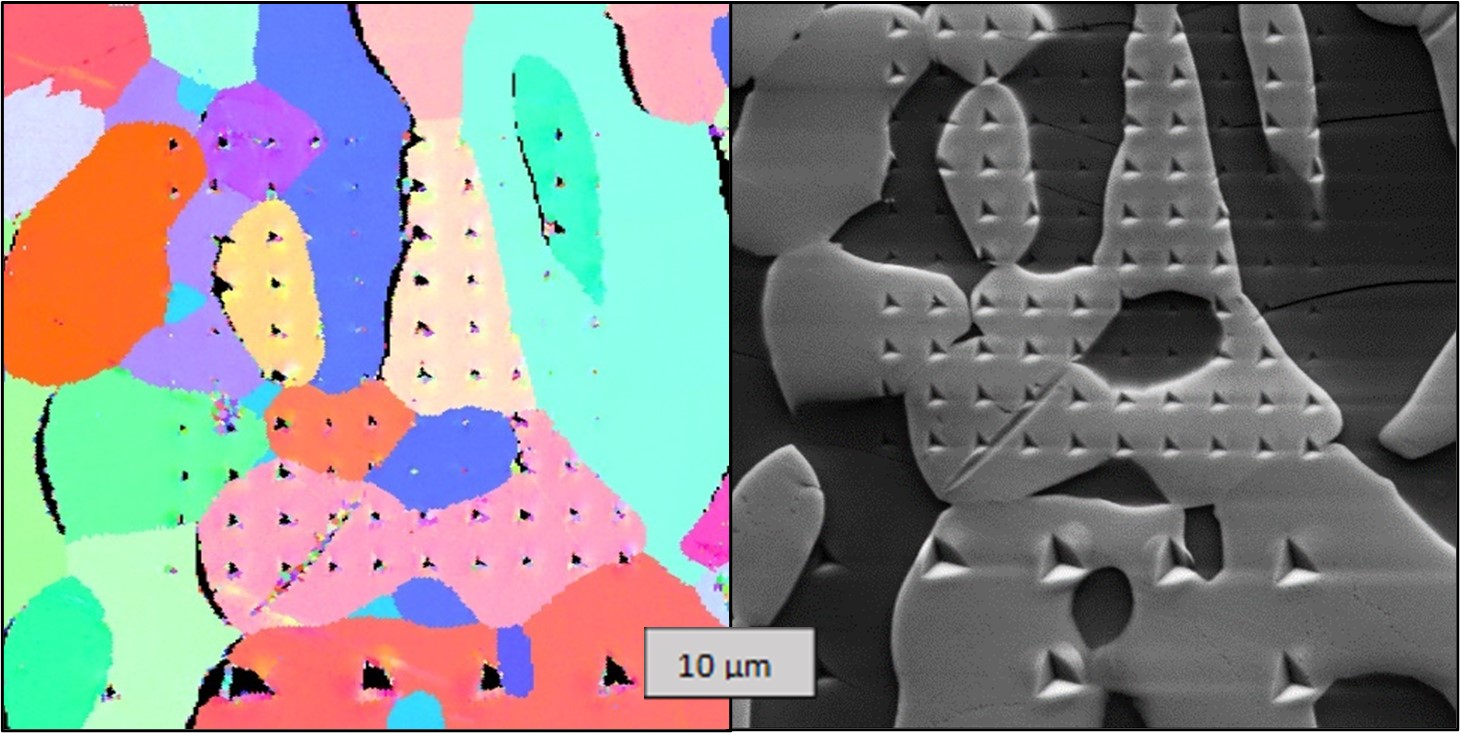Project 10: Small scale deformation and failure of Mo silicides


M.Sc. Sri Rathinamani Ramdoss (2nd cohort)
Supervisors: Prof. Ruth Schwaiger, Prof. Martin Heilmaier
Mo-Si-Ti alloys, notably the eutectic composition Mo-20Si-52.8Ti (at%), have garnered significant attention due to their remarkable resistance to oxidation and creep [1,2]. However, their practical use is currently constrained by their limited ductility at room temperature and a brittle-to-ductile transition occurring at around 1100 °C [3]. This composition consists of a body-centered cubic (BCC) disordered Mo-rich solid solution and an intermetallic hexagonal (Ti,Mo)5Si3 phase. The goal of this project is to understand fundamental mechanisms behind the deformation and failure in this alloy system and its individual phases.
During the funding period, the properties of the BCC Mo-Ti system were extensively investigated from the nano- to the millimeter scale by chemical and mechanical analysis methods to isolate substitutional solid solution strengthening. Model comparisons revealed competitive yield strength modelled by the motion of edge dislocations compared to screw dislocations for Ti-rich Mo-Ti solid solutions, driven by the non-linear change in lattice parameter [4]. Similar results in Mo-Nb solid solutions then confirmed these findings in a second binary system, indicating that edge dislocation-controlled strength might be more widespread in BCC solid solutions than expected.
The research in the second cohort will progress from the binary reference system to the ternary alloy Mo-20.0Si-52.8Ti. Using the micro-milling capabilities of focused ion beams (FIB) in combination with the load-displacement resolution of a nanoindenter, the mechanical properties of the two-phase material as well as the individual phases will be determined. Additional in-situ imaging using SEM, TEM and ToF-SIMS enables a deeper understanding of the correlation between mechanical properties and the microstructure.
[1] D. Schliephake et al., Intermetallics, 2019, 104, 133.
[2] S. Obert, A. Kauffmann, M. Heilmaier, Acta Materialia, 2020, 184, 132.
[3] A.S. Tirunilai et al., Advanced Engineering Materials, 2022, 11, 2200918.
[4] G. Winkens et al., Communications Materials, 2023, 4, 1, 26

